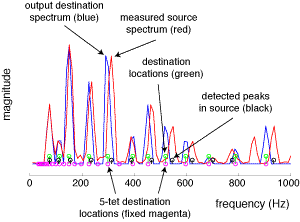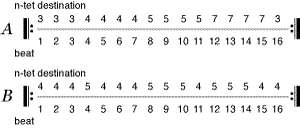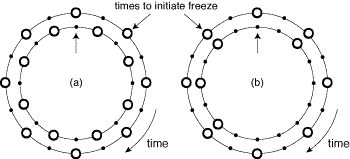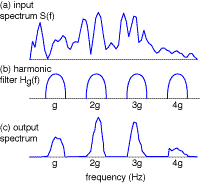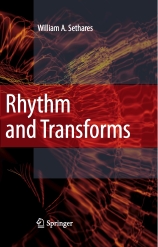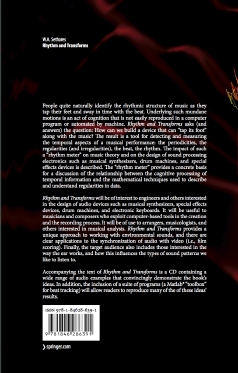

- Maple Leaf Rag at quarter speed (MapleQuarter.mp3 1:00).
- Maple Leaf Rag at half speed (MapleHalf.mp3 1:00).
- Maple Leaf Rag at double speed (MapleDouble.mp3 1:00).
- Maple Leaf Rag at four times normal tempo (Maple4x.mp3 0:27).
- Maple Leaf Rag at eight times normal tempo (Maple8x.mp3 0:14).
- Maple Leaf Rag at 16 times normal tempo (Maple16x.mp3 0:07).
- Maple Leaf Rag at 32 times normal tempo (Maple32x.mp3 0:03).
- Maple Leaf Rag at 64 times normal tempo (Maple64x.mp3 0:01).
- Gong (Gong.mp3 0:05). A single strike of a gong.
- Long Gong (LongGong.mp3 2:26). The same gong, stretched in a variety of ways to bring out details of the evolution of the sound that are impossible to hear at the normal rate.
- Very Slow # 1 (VerySlow1.mp3 4:00). A melange of beats chosen from several different songs, all equalized in time and then stretched by a factor of eight.
- Very Slow # 2 (VerySlow2.mp3 4:00). The same as (i), but modified with a variety of beat-based filters.
- Very Slow # 3 (VerySlowInspective.mp3 3:55). The piece in (iv) is slowed by a factor of eight.
- Inspective Latency (InspectiveLatency.mp3 3:47). An adaptively tuned piece from is presented here for comparison with its time stretched version in (iii).
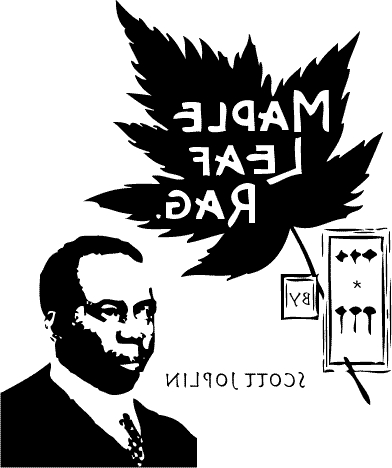

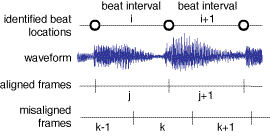
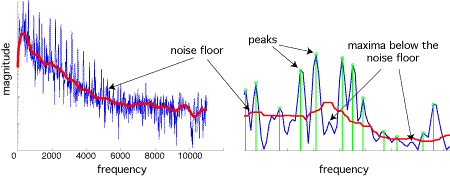
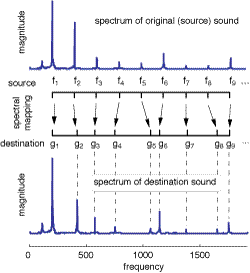
- The original sample contrasted with the spectrally mapped version
- A simple "chord" pattern played with the original sample, and then with the spectrally mapped version

- Harmonic trumpet compared with 11-tet trumpet
- Harmonic bass compared with 11-tet bass
- Harmonic guitar compared with 11-tet guitar
- Harmonic pan flute compared with 11-tet pan flute
- Harmonic oboe compared with 11-tet oboe
- Harmonic "moog" synth compared with 11-tet "moog" synth
- Harmonic "phase" synth compared with 11-tet "phase" synth
